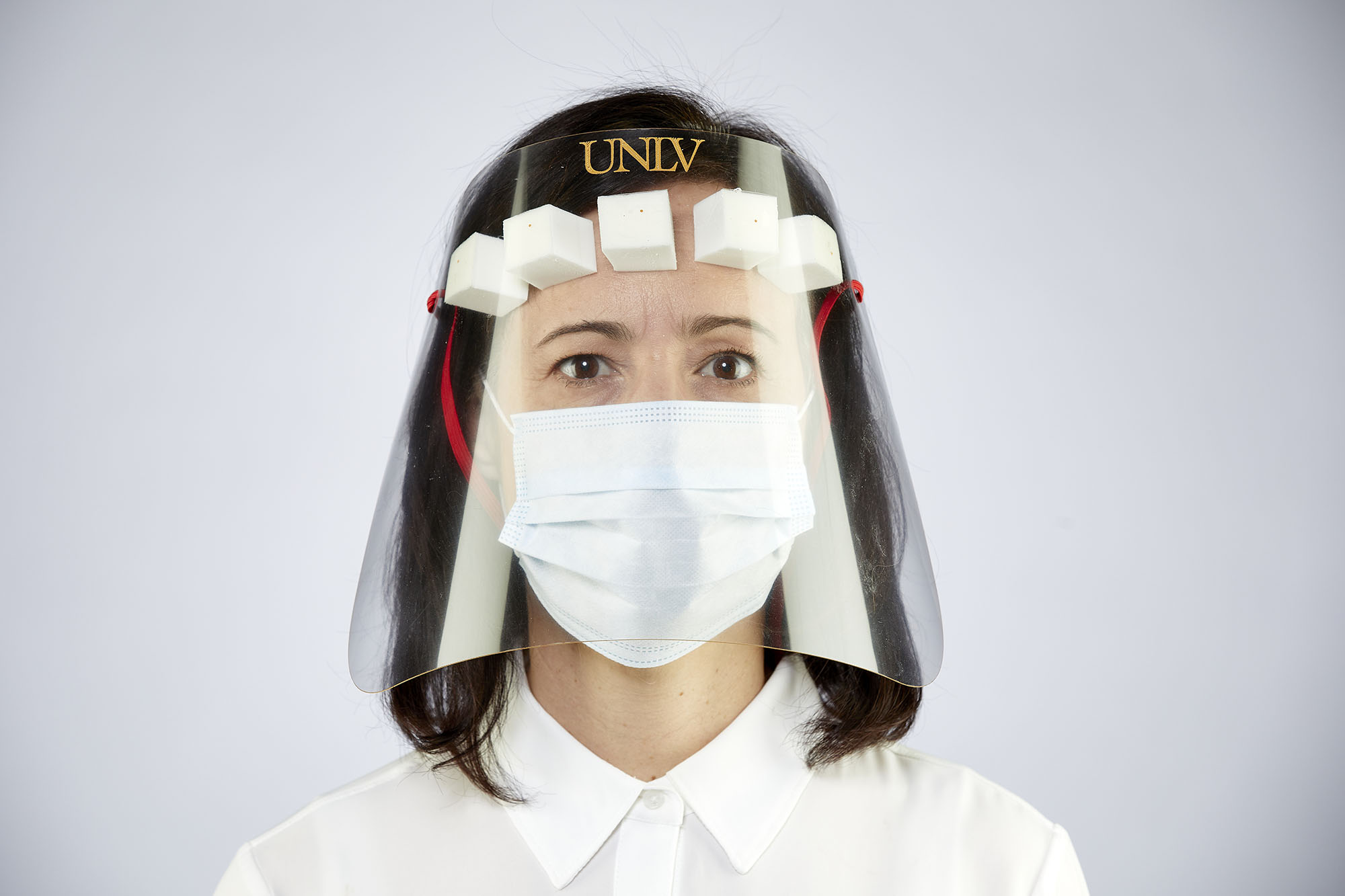Typically at this time of the spring semester, engineering labs would be filled with faculty and graduate assistants working on research projects, student groups gathering to design their next rocket or robot, and senior design teams making the final tweaks to the prototypes for their capstone competition.
But in mid-March, all the plasma cutters, 3D printers, gas guns, and more sat idle as shelter-in-place restrictions related to the novel coronavirus quieted the campus.
Health care providers across the Las Vegas Valley, however, were facing an unprecedented challenge, worsened by a lack of supplies to protect themselves. A local medical community group reached out: Could the UNLV College of Engineering turn the machines back on and help fill the gap for personal protection equipment, such as face shields? The college put together a task force including Associate Dean Mohamed Trabia, mechanical engineering chair Brendan O’toole, and mechanical engineering distinguished professor Kwang Kim.
“We talked about a few design options and (assessed) what raw materials we would need,” Kim said. “All of us felt that what was taking place in New York could also happen in our community, and if we had the opportunity to help, we absolutely should.”
A face shield, at its most basic, is a piece of clear, nonporous plastic that covers and protects the user’s eyes, nose, and mouth from coming into direct contact with bodily fluids, like saliva droplets, that may contain the coronavirus. They’re designed to be worn in conjunction with a face mask.
Some of the immediate challenges included sourcing the right material, since much was on backorder throughout the country, according to Kim, who is heading up the college’s efforts.
“I was lucky to find some raw materials that would work and could be delivered in the first week of April,” Kim said. “We produced our first prototype on April 3.”
And the team would need to act rapidly to plan, design, and execute a solution and get it to local caregivers. Their design had to be simple and functional, not stylish.
The team added mechanical engineering doctorate student Justin Neubauer and postdoctoral researcher Taeseon Hwang, and came up with a seemingly simple three-part design for the face shield, a foam band for comfort, and an elastic band to secure it a to the wearer.
Eingineering professor Kwang Kim’s Design and Fabrication of Disposable Face Shield sheet with components, fabrication and assembly instructions, and links for materials sourcing.
In Kim’s active materials & smart living lab, the team scaled up quickly, using a CAD program to draw the initial design, and a laser system including software to define the toolpath and a laser cutter/engraver.
They churned out 15 to 20 face shields a day, packaging them in fastened, dated bags with assembly instructions.
As of April 13, the engineering team had distributed 174 face shields to caregivers in the community, including Sunrise Medical Center, Dignity Health Clinics, and UNLV Medical School. The team will continue making face shields as long as the necessary materials are available.
Customizing a Solution for Ophthalmologists
While the college’s design worked for most medical professionals, one of the its medical partners, Shepherd Eye Center, noted some special challenges for its optometrists.
Peter Faught, an experimental testing/prototype engineer in the college’s civil and environmental engineering and construction department, stepped in to make a prototype specific to their needs.
“Solving problems is what drives engineers in normal times, so I feel we have an obligation to lead the charge in troubled times,” Faught said.
Instead of being worn, this 1/8-inch acrylic shield has two circles cut out so it can attach directly to the slit lamp microscope that optometrists use to examine the structures of the eye.
After meeting again with Shepherd and confirming that the prototype would in fact work, Faught and Terry Kell, mechanical engineering model designer/machinist, began production. The team worked with Piedmont Plastics to get the blank plastic sheets cut using a pattern designed with the college’s CAD software. Then, in UNLV’s Mendenhall innovation and design laboratory, they cut the holes for the microscope eyepieces.
Fifty shields are being made for Shepherd, but Faught and Kell stand ready to assist others as needed.
“While our primary focus must be solving the problems facing our first responders, as engineers we need to be in the lead developing self-distancing safeguards that will help everyone in what experts say will be our new normal,” Faught said.
Original post https://alertarticles.info
